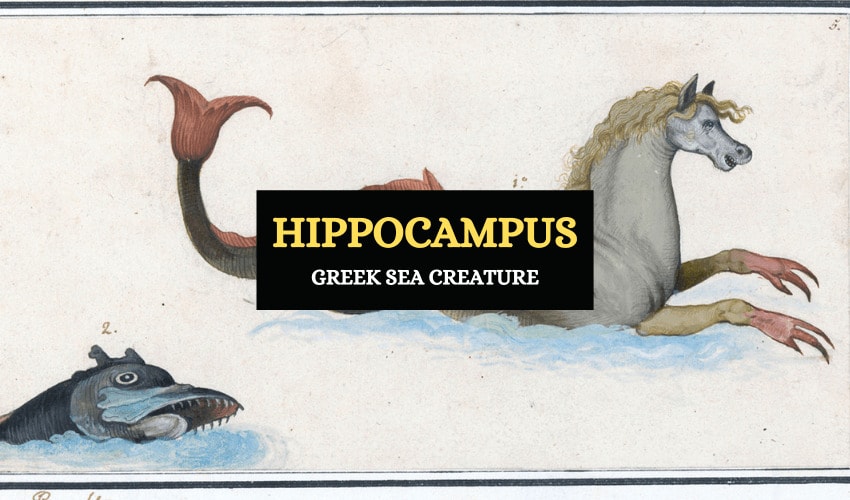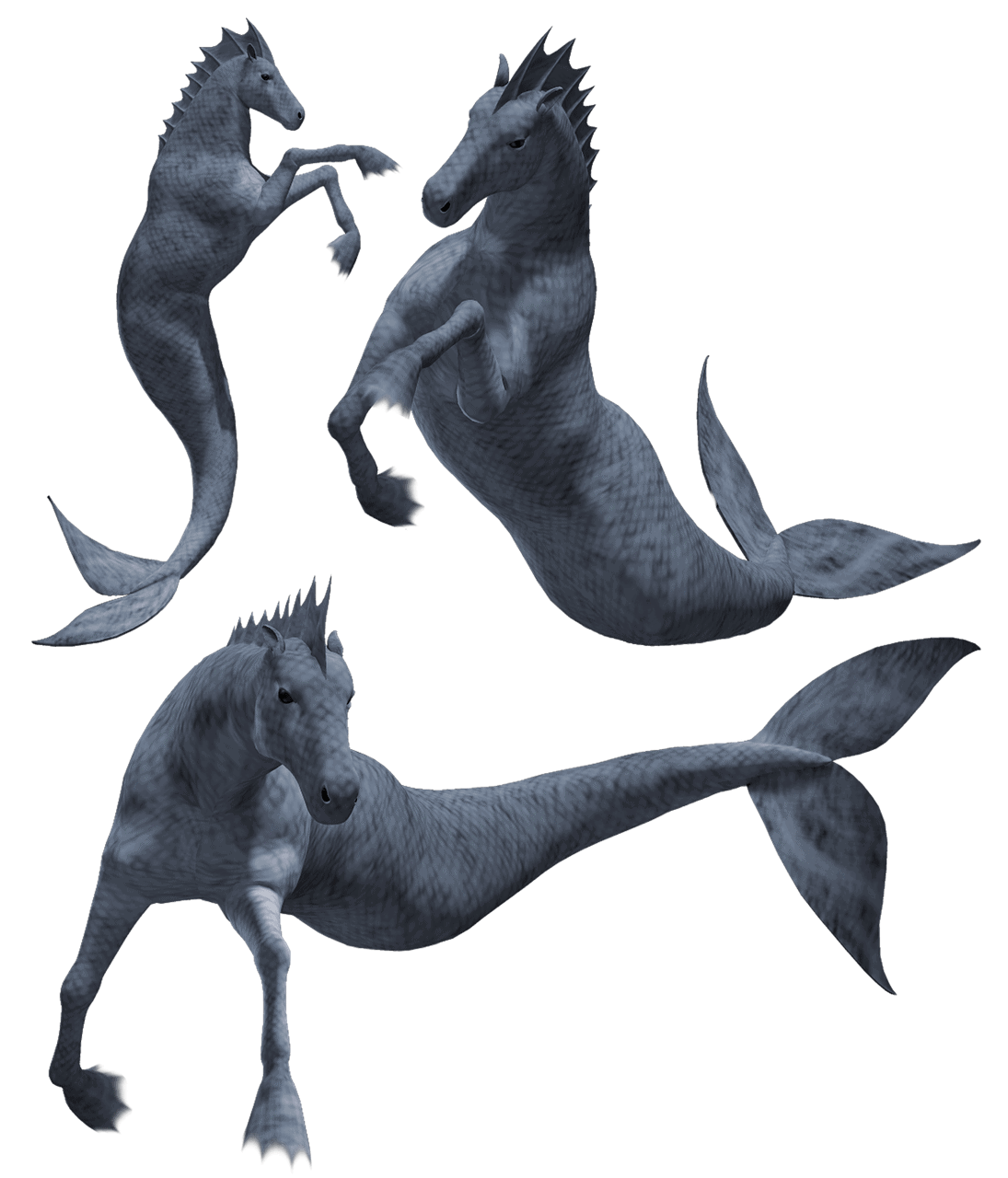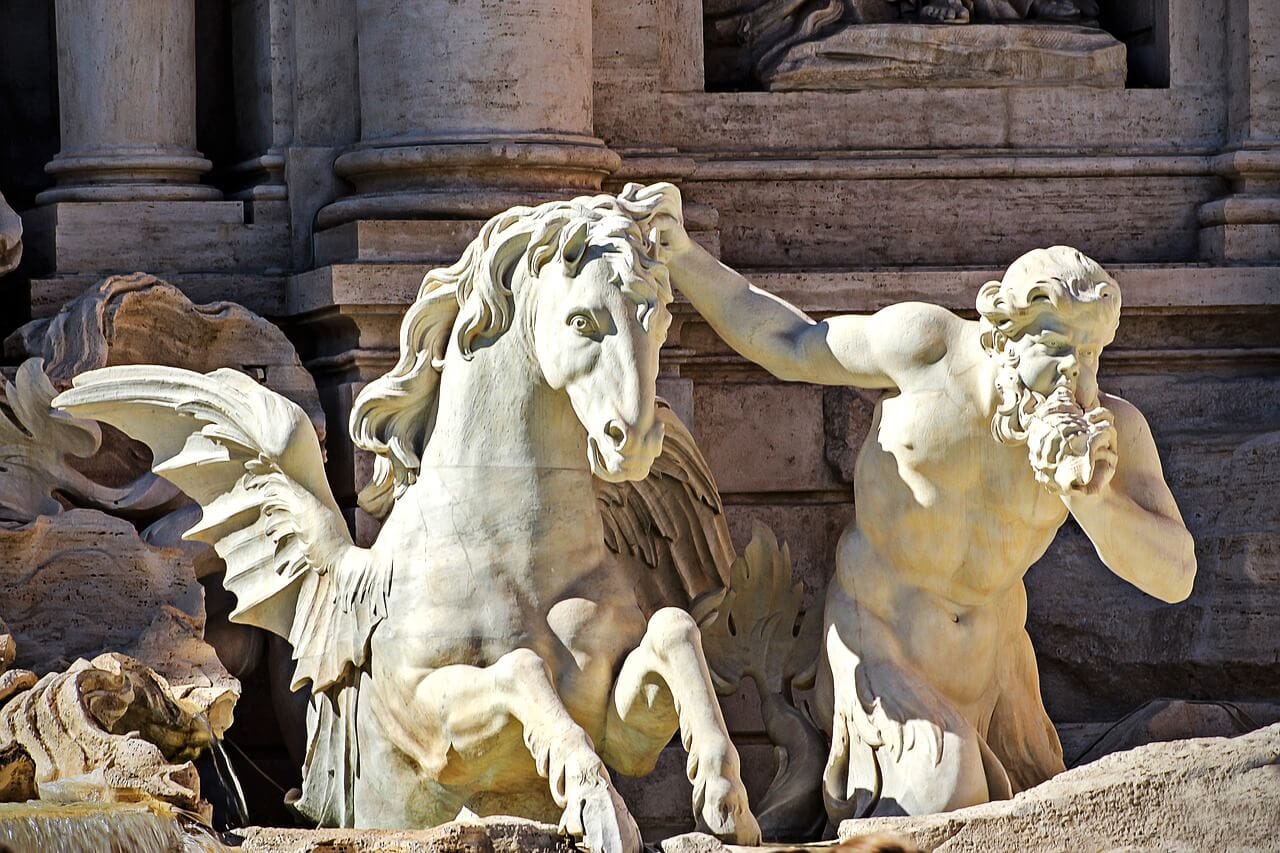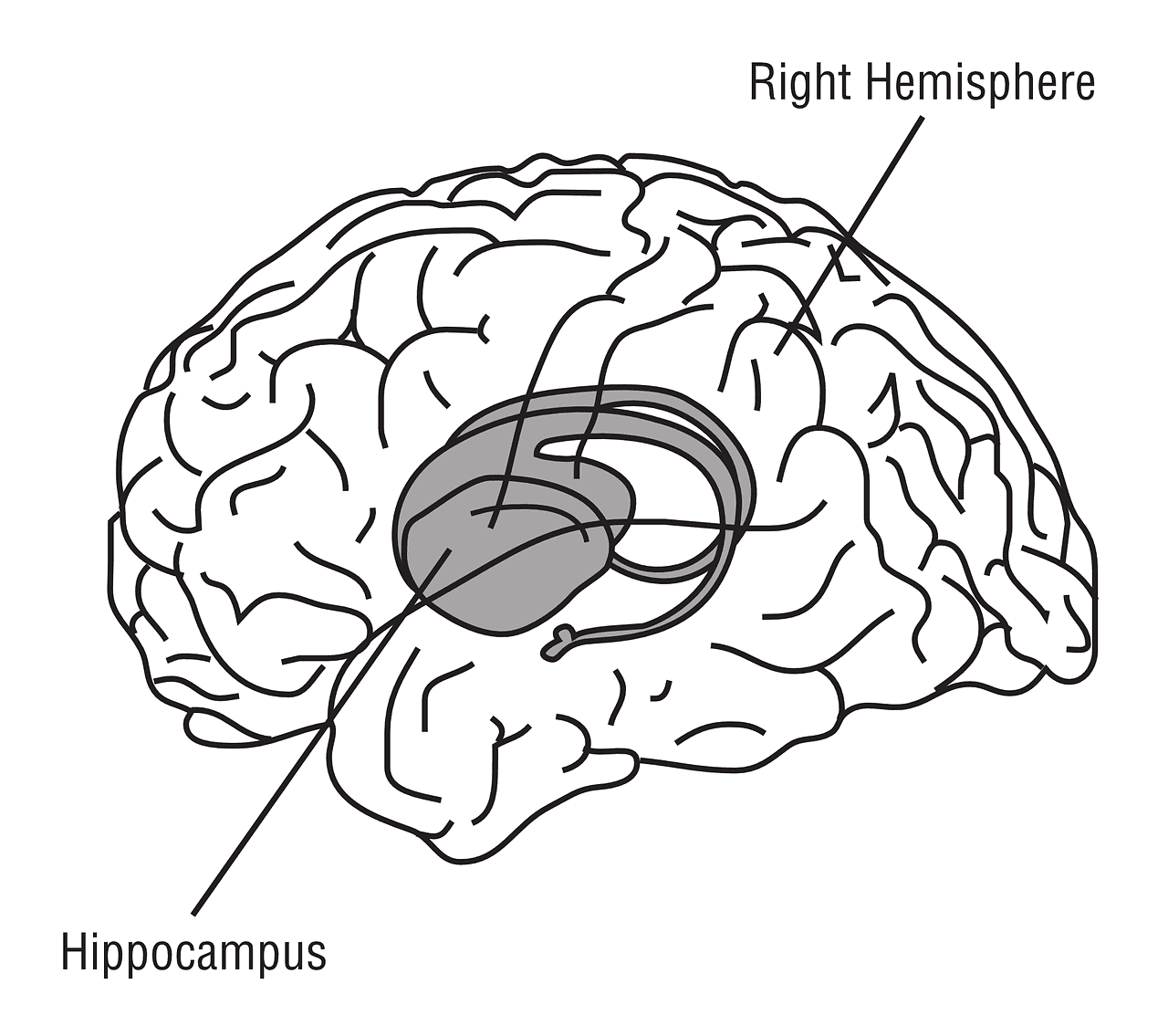
Table of Contents
The hippocampus or hippocamp (Plural hippocampi) was a sea creature that originated in Greek mythology. Hippocamps were fish-tailed horses believed to be the adult form of the little fish that we know today as sea horses. They were ridden by other sea creatures as a form of transport, including the Nereid nymphs and were closely associated with Poseidon, one of the most powerful gods of the ocean.
What Is A Hippocampus?

The hippocampus was an aquatic creature with a personality similar to that of modern day horses. It was commonly depicted with:
- The upper body (head and foreparts) of a horse
- The lower body of a fish
- Along fish tail like that of a serpent.
- Some artists depict them with manes made of flexible fins instead of hair and webbed fins instead of hooves.
Hippocamps were also typically portrayed with large wings that helped them to move fast under water. They were predominantly blue or green, although they’re also described as portraying various colors.
The name hippocampus comes from the Greek word ‘hippos’ meaning ‘horse’ and ‘kampos’ meaning ‘sea monster’. However, it’s a popular creature not only in Greece but also in Phoenician, Pictish, Roman and Etruscan mythologies.
How Did Hippocamps Defend Themselves?
Hippocamps were said to have been good-natured beasts that got along well with other sea creatures.
They used their powerful tails to defend themselves when attacked and they had a strong bite but they preferred to flee rather than go for a fight.
They were strong and swift swimmers that could span several miles of sea in a few seconds which is why they were popular rides.
Habits of the Hippocamps
Because they were so large, hippocamps preferred to live in the deeper part of the sea and were found in both saltwater and freshwater. They didn’t need air to survive and hardly returned to the water’s surface unless their food sources were completely depleted. According to some sources, they were herbivorous creatures that fed on seaweed, algae, bits of coral reef and other sea plants. According to some accounts, they fed on small fish as well.
According to various sources, hippocamps traveled around in packs of ten, similar to lions. The pack consisted of one stallion, several mares and a number of young hippocamps. It took a newborn hippocampus a year to reach physical maturity but a year longer to mature intellectually and until then, their mothers were very protective of them. Overall, these lovely creatures preferred to have their privacy and didn’t like to have their space invaded.
Symbolism of the Hippocampus
The hippocampus is often regarded as a symbol of hope since it was a benevolent and spiritual creature that helped people.
As a mythical creature, it’s strongly associated with creativity and imagination. Sailors regarded the hippocampus as a good omen and it was also a symbol of agility and strength. In addition to this, it symbolizes true love, humility and freedom.
The image of the hippocampus is a popular one for tattoo designs. Many people who have hippocampus tattoos say that it makes them feel free, beautiful and graceful.
In these regards, the symbolism of the Hippocampus is similar to that of Pegasus, another mythical horse-like creature of Greek mythology.
The Hippocampus in Greek and Roman Mythology

Hippocamps were known for being gentle creatures that had good relationships with their owners. They were respected by all sea creatures such as mermen, sea elves and sea gods who treated them as their loyal mounts.
According to Homer’s Iliad, Poseidon’s chariot was pulled by two or more beautiful hippocamps which is why the beasts became closely associated with the Greek god of the sea. Therefore, they were revered by the Ancient Greeks as the mounts of Poseidon (in Roman mythology: Neptune).
Hippocamps often rescued sailors from drowning and saved men from sea monsters. They also helped people to overcome any problems that they faced at sea. It was a common belief that the sea suds which formed whenever the waves crashed was caused by the movement of the hippocampus beneath the waters.
In Pictish Mythology
Hippocamps were known as ‘Kelpies’ or ‘Pictish Beasts’ in Pictish mythology and appear in many Pictish stone carvings found in Scotland. Their image looks similar but aren’t exactly the same as the images of Roman sea-horses. Some say that the Roman depiction of the hippocampus originated in Pictish mythology and was then brought over to Rome.
In Etruscan Mythology
In Etruscan mythology, the hippocampus was an important theme in reliefs and tomb paintings. They were sometimes depicted with wings like those in the Trevi fountain.
The Hippocampus in Popular Culture

In biology, hippocampus refers to an important component of the brain of humans and other vertebrates. The name was given because this component looks similar to a searhorse.
The image of the mythical hippocampus has been used as a heraldic charge throughout history. It also appears as a decorative motif in silver-ware, bronze-ware, paintings, baths and statues.
In 1933, Air France used a winged hippocampus as its symbol and in Dublin, Ireland the images of bronze hippocamps are found on lamp-posts on the Grattan Bridge and next to Henry Grattan’s statue.
Hippocampi have been featured in many films and tv series based on Greek mythology such as ‘Percy Jackson and the Olympians: Sea of Monsters’ in which Percy and Annabeth ride on the back of a beautiful hippocampus. They’re also featured in many video games such as ‘God of War’.
In 2019, one of Neptune’s moon’s was named Hippocamp after the mythical creature.
In Brief
Hippocamps remain some of the most popular mythical creatures because of their gentle nature and beauty. They’re known for their incredible speed, agility and excellent understanding of other creatures as well as humans and deities. If treated with respect, they were the most loyal and loving creatures ever to exist.








